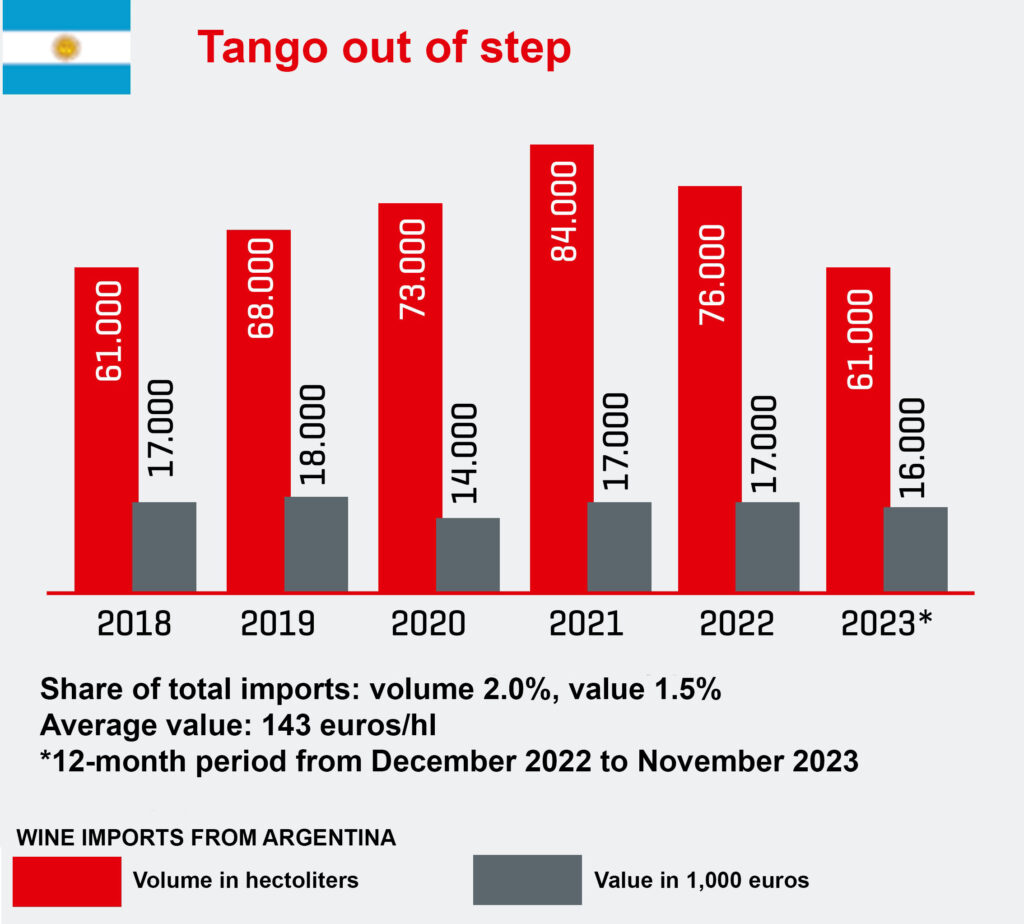
The wine-growing region of Argentina is the largest in South America and the seventh largest in the world behind Italy, France, Spain, USA, China and has developed into a globally recognized and successful wine nation.
Probably the best known wine regions today are Mendoza and La Rioja in the greater Cuyo region, which produce many Argentine red wines. Malbec wines are probably the protagonists in Argentina in the context of red wine,
The Cafayate region in Salta province, on the other hand, is known for Argentine white wines. This aromatic white wine grape Torrontés can hardly be found anywhere else. But also the well-known overseas classics Sauvignon Blanc and Chardonnay are excellent white wines.
The wines from Argentina are a real pleasure!
Most important grape varieties (WHITE)
Malbec, Bonarda, Cabernet Sauvignon, Syrah, Merlot
Main grape varieties (RED)
Torrontes, Chardonnay, Chenin Blanc
Most important regions
Mendoza — Midwest, in the Andes bordering Chile. About 70% of Argentine wine is produced here.
San Juan — Bordering Mendoza to the north.
La Rioja — North bordering San Juan
Rio Negro — In the north of Patagonia
Catamarca — North bordering San Juan
Salta — In NW Argentina. In the department of Cafayate, 70% of the wine production is concentrated. The vineyards are the highest commercial vineyards in the world, with altitudes ranging from 1,500 m to 2,400 m above sea level.

In Argentina, the harvest is increasing again despite difficult weather conditions. The year was characterized by capricious weather: a cool spring and the unusually long-lasting Zonda wind dried out the vines. It remained cool and dry until mid-January, followed by a heatwave with temperatures of up to 40 degrees, which led to rapid ripening and drought stress. Despite the heat, many regions were able to retain their acidity in the wine at night, resulting in particularly successful varieties. Good white wines from Chardonnay and Sémillon as well as red wines from Pinot Noir and Syrah are expected in the high altitudes, provided they are not affected by the zonda. Malbec is also expected to do well. In Mendoza, the year was relatively balanced, but cooler with a long ripening period. Although the harvest volume has increased compared to the previous year, it is still 15 percent below the average of recent years. In addition, subsidies were cut, putting small winegrowers under pressure. The government has cancelled all non-repayable subsidies, including the Proviar II program. 8 million dollars that were made available in November 2023 were never paid out.

